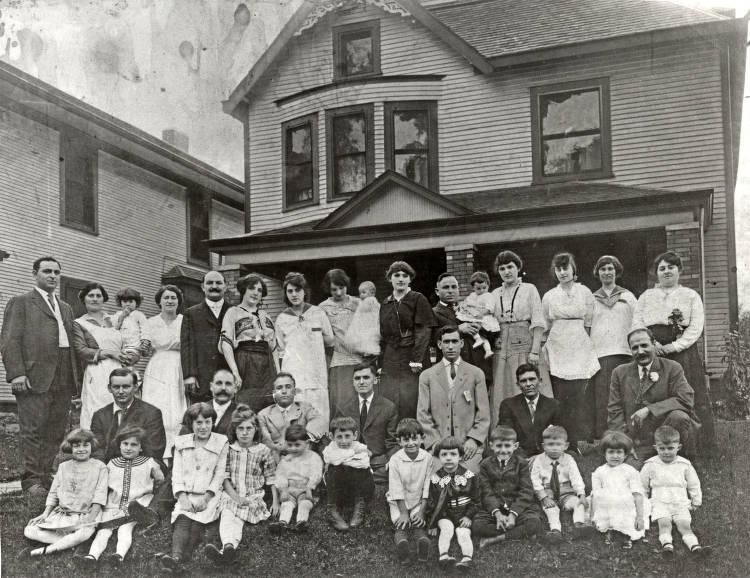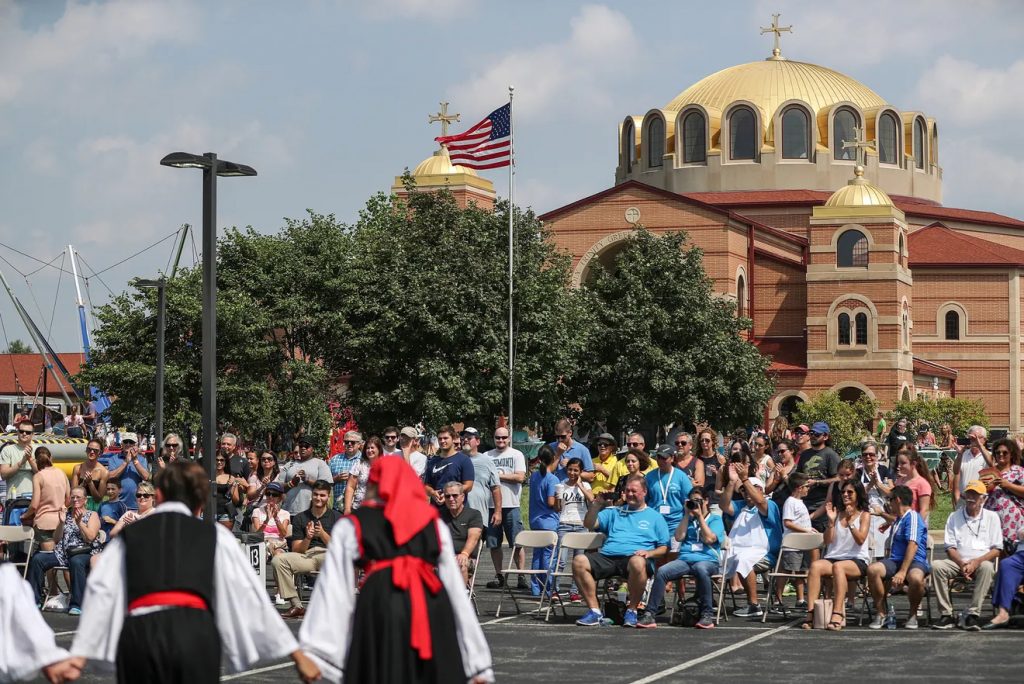In the early 20th century, a small Greek community, primarily young men from Tripoli and other central Peloponnesian villages, rented a space at 27 South Meridian Street to hold weekly services. In 1905, the congregation requested that a priest be sent from Greece to lead them. Its members dedicated their parish to the Holy Trinity, in 1905, and in January 1910, the congregation filed its formal charter and incorporation with the Indiana Secretary of State.

The parish continued to meet at 27 South Meridian Street until 1914. At that time, the parish had grown enough to purchase a house at 213 North Street. The first floor served as the sanctuary and the priest lived on the second floor. The community then exchanged property and built a brick church at 231 North West Street.
By the end of the 1950s, the parish had outgrown its facilities on West Street. The parish bought property at 40th and Pennsylvania streets and broke ground for a new building on August 23, 1959. The new church opened on July 31, 1960, and the U.S. archbishop consecrated it on June 1, 1980. At the time of its consecration, the archbishop enshrined the church altar table with the relics of Saint Antastasia, a Roman who assisted early Christians in the catacombs; Saint Theodore who martyred himself in Byzantium in 1795; and Bishop Tyrone of Salonika. In 1973, Holy Trinity Greek Orthodox Church held its first Indy GreekFest, which is one of the oldest and largest ethnic festivals in Indianapolis, a tradition that continues.
With increased membership, the church again outgrew its space. The neighborhood, in which it was located, was placed on the National Register in 1986, making it impossible to expand there. In 1998, Holy Trinity, therefore, purchased property at Shelborne and 106th Street in Carmel, Indiana. Groundbreaking for a new church took place in September 2006. It opened on Christmas Eve 2008. Its former building at 40th and Pennsylvania Streets was repurposed as the Basile Opera Center, home of the .
Building costs for the new church totaled $7.3 million. San Franciso architect Christ Kamages, of CJK Design of Los Angeles, designed the structure, and Shiel Sexton of Indianapolis served as the general contractor for the project. Kamages’s design follows many aspects of the Great Church of Hagia Sophia, which was completed in Constantinople (Istanbul) in 537. It has the distinction of being the “first Triad Byzantine-Design church” constructed in over 1,400 years.

According to tradition, site designers positioned the church on its 20-acre site to face Jerusalem and the rising sun. The building includes a 55-foot-diameter dome that weighs more than 50 tons. It is one of the largest Orthodox Church domes in the Western Hemisphere. For Orthodox churches, the dome has the same importance as the steeple for Protestants and Catholics, making the size of the dome of Holy Trinity even more significant to its members.
This dome was built on the ground, and three massive cranes lifted it into position. Master plaster workers, using ancient techniques and old-world cement plaster, bridged gaps, trained a new generation of artisans in the techniques of the art, and worked with other trades to secure the dome.
The sanctuary has no straight or flat walls. Courses and lines of bricks create accent bands that go all through the inside and outside of the church. The design called for cast stone to frame the building and its 20 windows. The construction team had to review each piece of the construction to ensure proper alignment. In addition, steel fabricators had to engineer carefully every facet of brick support, which involved 3D modeling because of the complex geometric design. The church has a custom-made metal roof supported by wooden decking.
The edifice includes more than 25,000 square feet of space, double the size of the church at 40th and Pennsylvania. The design allows seating for 600 people. All seats in the sanctuary are no more than 70 feet from the altar. The sanctuary also has a choir and a baptistery that allows for full immersion. Beyond the sanctuary, the church includes a library, administrative offices, and an education wing.
Holy Trinity commissioned Athens-born artist George Kordis to beautify the interior of the building with traditional iconography. This artwork encompasses a variety of biblical themes from the Old and New Testaments. Kordis and his team completed iconography, which adorns the altar, nave, and narthex, in February 2018.
The parish historically has been part of the Greek Orthodox Metropolis of Detroit (regional governing body in the hierarchy of the Greek Orthodox Church), but in September 2018, the head of the Metropolis announced that Holy Trinity Greek Orthodox Church would be elevated to a cathedral. It remains the only Greek Orthodox parish in Indianapolis.

Help improve this entry
Contribute information, offer corrections, suggest images.
You can also recommend new entries related to this topic.

